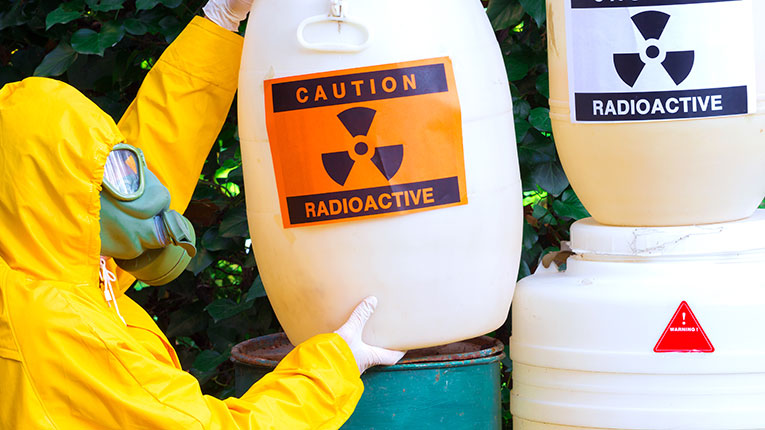An International Atomic Energy Agency (IAEA) team of experts said that Romania is committed to the safe and sustainable management of radioactive waste while noting opportunities for improving implementation including preparations for further disposal facilities for radioactive waste from nuclear fuel cycle activities, according to a release received on Tuesday by Energynomics.
The Integrated Review Service for Radioactive Waste and Spent Fuel Management, Decommissioning and Remediation (ARTEMIS) mission which took place from 13 to 22 March was requested by the Government of Romania to evaluate its national programme for the safe and sustainable management of radioactive waste and spent fuel.
Radioactive waste in Romania comprises material from fuel cycle activities and other institutional radioactive waste from research, industry and hospitals. Institutional radioactive waste in Romania is currently disposed of at the National Repository Radioactive Waste (DNDR) disposal facility. The Government plans to build two further disposal facilities for radioactive waste from nuclear fuel cycle activities. The first facility for short-lived low and intermediate level radioactive waste is to be constructed near the Cernovoda nuclear power plant site. It is planned to commence operations in 2028. The second facility, a deep geological disposal facility for high level waste, is planned to be commissioned around 2055. The location has not yet been determined.
ARTEMIS missions provide independent expert advice from an international team of specialists convened by the IAEA. The reviews assess the country’s national programme against IAEA Safety Standards and technical guidance as well as international good practices. The mission was requested by Romania to fulfil its European Union (EU) obligations that require an independent review of EU Member States’ national programmes for the management of radioactive waste and spent fuel.
Hosted by the Nuclear and Radioactive Waste Agency (ANDR), within the Ministry of Energy, the ten-day ARTEMIS mission involved detailed discussions with Romanian counterparts to review specific topics such as the national strategy for radioactive waste, the radioactive waste inventory, and the financing of radioactive waste management.
Romania generates radioactive waste from its one nuclear power plant, at Cernavoda. It consists of two 650-Megawatt electric (MWe) pressurized heavy-water reactors and accounts for about 20% of the country’s electricity. Unit 1 went into commercial operation in 1996 and Unit 2 in 2007. In addition, Romania operates one research reactor, one nuclear fuel manufacturing plant and uses radioactive sources in medical and industrial applications. One research reactor is in decommissioning.
“Romania has developed a comprehensive approach to the management of radioactive waste and is committed to further develop and implement safe and sustainable radioactive waste management, whilst continually seeking to minimize waste generation,” said ARTEMIS team leader Richard Cummings, Technical Director of Nuclear Waste Services, United Kingdom.
“The Government is well aware of the necessary steps to ensure the safe management of its radioactive waste and is aiming to acquire the appropriate expertise.”

